Given →F=(xy2)ˆi+(x2y)ˆjN. The work done by →F when a particle is taken along the semicircular path OAB where the coordinates of B are (4,0) is
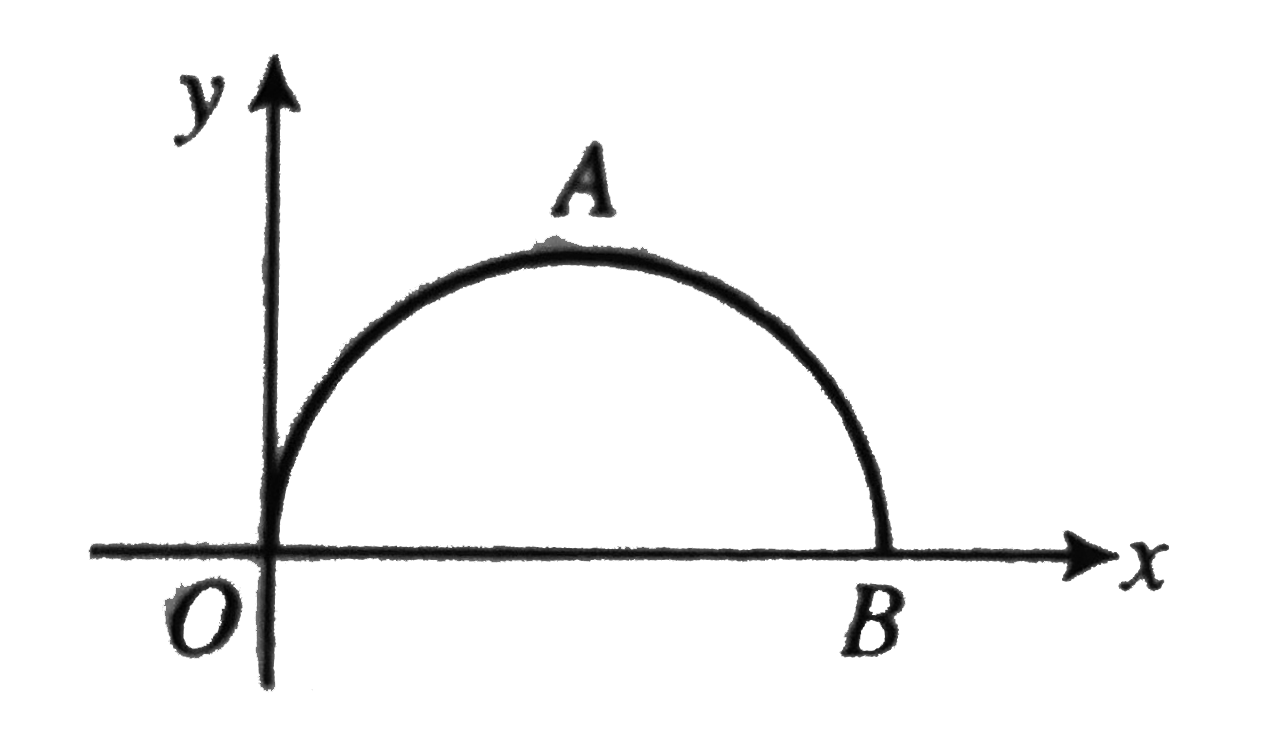
(a) 653J
(b) 752J
(c) 734J
(d) Zero
The correct Answer is:D
Given →F=(xy)2ˆi(x2y)ˆj
W=∫Fxdx+∫Fydy
=∫xy2dx+∫x2ydy
=12∫d(x2y2)=[x2y22]4,00,0=0
Topper's Solved these Questions
- BOOK - CENGAGE PHYSICSCHAPTER - WORK, POWER & ENERGYEXERCISE - Multiple Correct25videos
WORK, POWER & ENERGY
- BOOK - CENGAGE PHYSICSCHAPTER - WORK, POWER & ENERGYEXERCISE - Linked Comprehension55videos
WORK, POWER & ENERGY
- BOOK - CENGAGE PHYSICSCHAPTER - WORK, POWER & ENERGYEXERCISE - Subjective23videos
WORK, POWER & ENERGY
- BOOK - CENGAGE PHYSICSCHAPTER - VECTORSEXERCISE - Exercise Multiple Correct5videos
VECTORS
Similar Questions
Force acting on a pasrticle is →F=(αyˆi+βxyˆj). Find the work done by this force, when pasrticle is moved alolng the line 2x=3y from origin to the point (3,2) {take quantities in SI units and α=1,β=1}
View SolutionA force acting on a particle moving in the x-y plane is given by →F=(2yˆi+x2ˆj)N, where x and y are in meters. The particle moves from the origin to a final position having coordinates x=5.00m as shown in figure. Calculate the work done by →F on the particle as it moves along (a) OAC, (b) OBC, and (c) OC. (d) Is →F conservative or non-conservative? Explain.
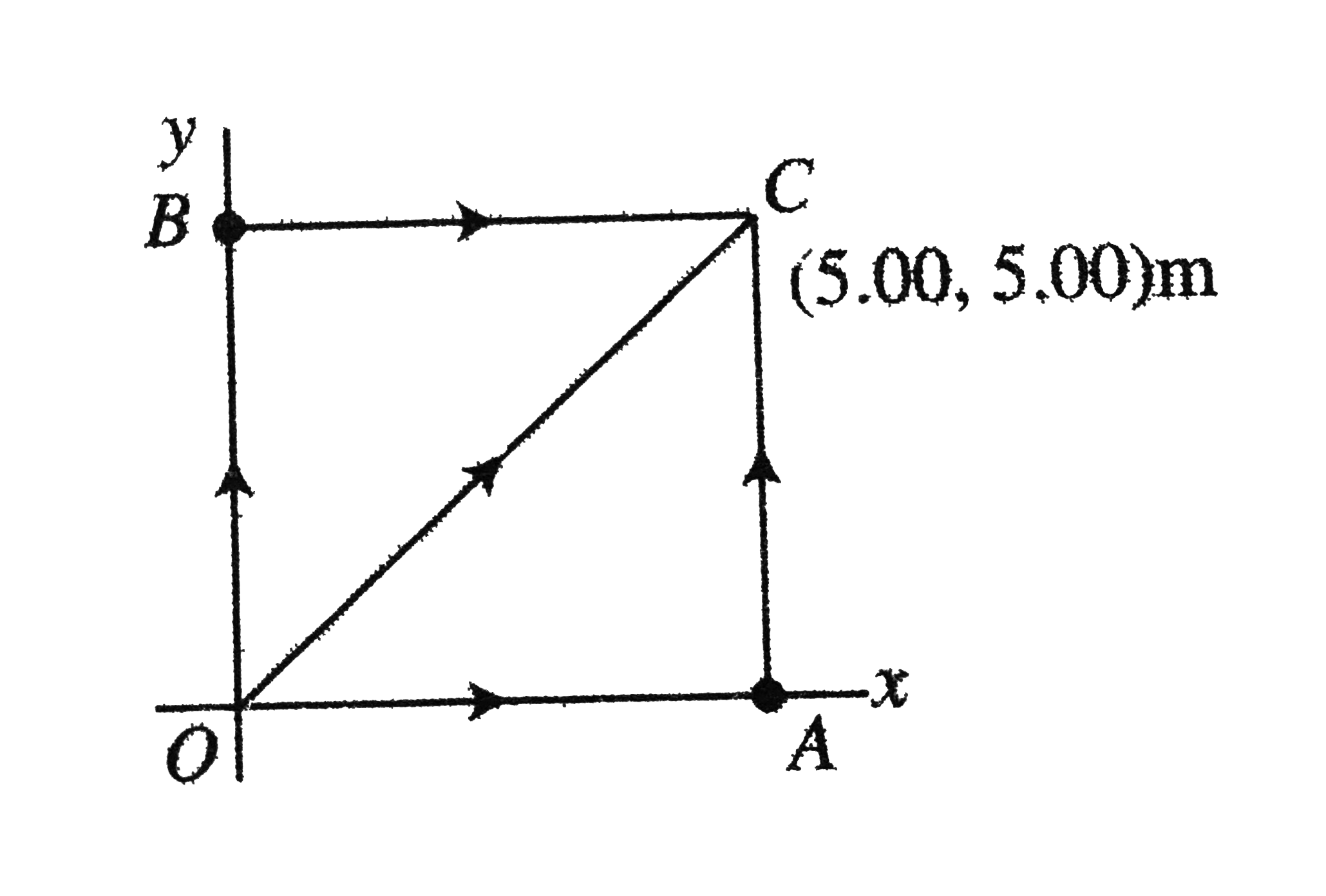 View Solution
View Solution
Knowledge Check
- Question 1 - Select One
The work done by the forces →F=2ˆi−ˆj−ˆk in moving an object along the vectors 3ˆi+2ˆj−5ˆk is:
A−9 unitsB15 unitsC9 unitsDNone of these - Question 2 - Select One
A force →F=(3xy−5z)ˆj+4zˆk is applied on a particle. The work done by the force when the particle moves from point (0,0,0) to point (2,4,0) as shown in figure.
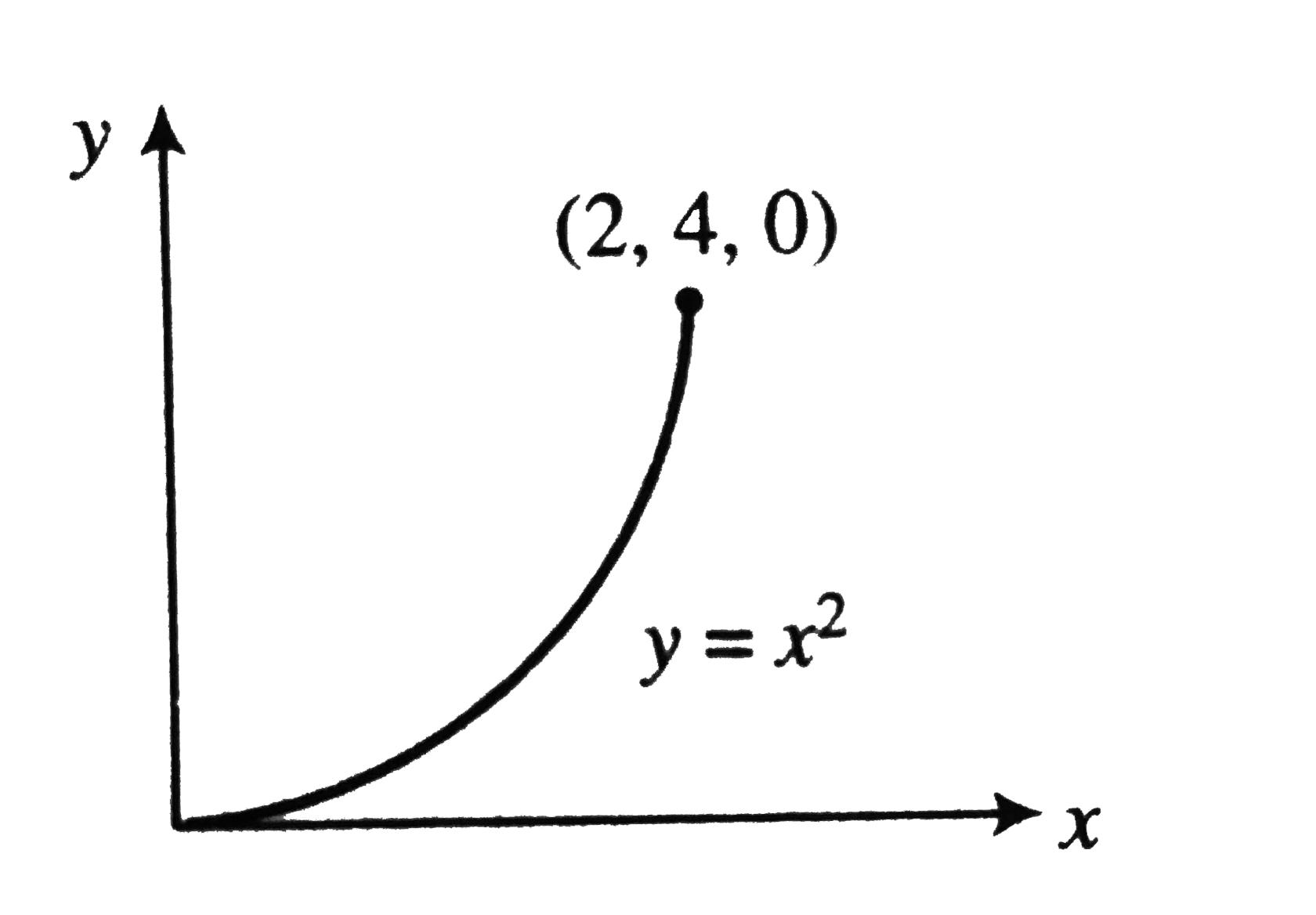 A(a) 2805unitsB(b) 1405unitsC(c) 2325unitsD(d) 1925units
A(a) 2805unitsB(b) 1405unitsC(c) 2325unitsD(d) 1925units - Question 3 - Select One
A force →F=(5ˆi+3ˆj) Newton is applied over a particle which displaces it from its origin to the point →r=(2ˆi−1ˆj) metres. The work done on the particle is
A−7JB+13JC+7JD+11J
A body is subjected to a constnat force →F=(2ˆi+ˆj+3ˆk)N. If work done by this force in taking a particle from (1,2,3) to (3,2,1) is −2n (in joule) then value of n is (coordinates are in metre) :
View SolutionA body is subjected to a constant force given by
→F(N)=−ˆi+2ˆj+3ˆk
What is the work done by this force in moving the body through a distance of 4 m along the z=axis and then 3 m along the y-axis?View SolutionA particle is moved along the different paths OAC,OBC&ODC as shown in the figure . Path ODC is a parabola , y=4x2. Find the work done by a forc →F=xyˆi+x2y on the particle along these paths. Is this force a conservative force ?
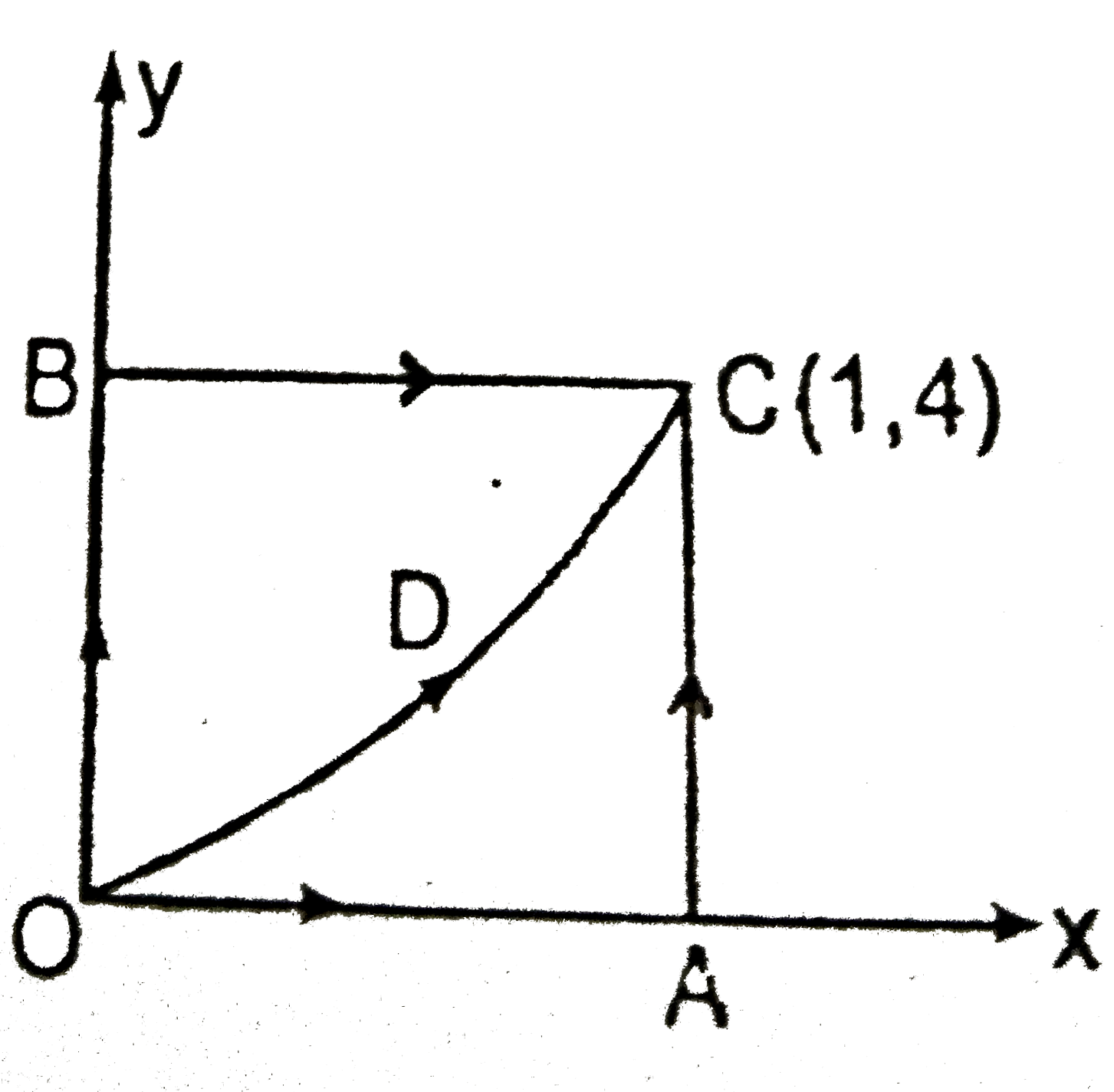 View Solution
View SolutionA force →F=k[yˆi+xˆj] where k is a positive constant acts on a particle moving in x-y plane starting from the point (3, 5), the particle is taken along a straight line to (5, 7). The work done by the force is :
View SolutionA force given by →F=fxˆi+fyˆj+fzˆk acts on a particle which moves from (a, b, c) to (d, e, f). The work done by the force F is : (Here A1,A2,A3 are magntitude of area bounded )
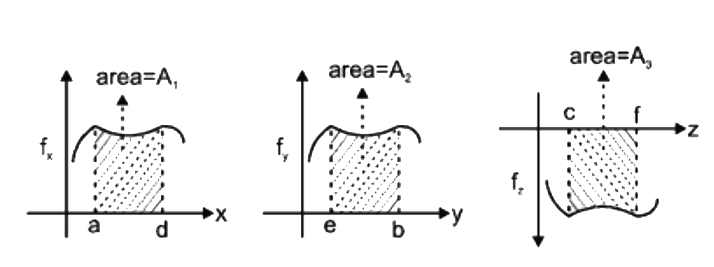 View Solution
View Solution

